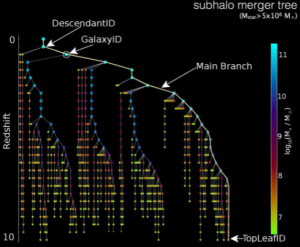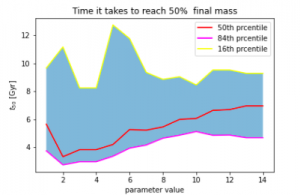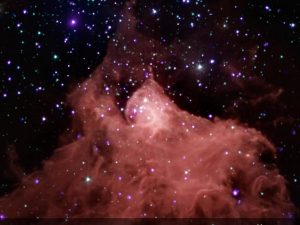Credit: Sina Babaei Zadeh.
Originally from Toronto, Sina is going into his second year of math and astrophysics double major at Western University this fall. In addition to his SURP grant, he was awarded the Aurora Borealis Fellowship.
What made you decide to participate in SURP?
What is your favourite thing about SURP?
This is a hard question as there are a lot of top things, but if I had to select one, I would choose the diversity at every level from mentors to administrators to SURP students themselves. There are people from all around the world with unique backgrounds and views. This allows you to experience and learn about research topics and methods in North America, but also from other continents. For instance, I got to work with a UK based simulation- one of the largest in the world- because one of my mentors had completed his education in the UK and thus had familiarity with it. This diversity is also great for learning about other cultures and perspectives, something that I highly value.
Can you tell us about your research project?
Can you explain how SURP has perhaps been different from your undergrad work?
One obvious difference is the learning environment. In regular classes, the student to teacher ratio is very high, but in SURP it can be even smaller than one (in my case it was 1:3)! This allows you to work with top scientists very closely and actually feel part of the researcher community. Furthermore, the environment is much more relaxed and you can just chat with your mentors anytime that you want whether it’s a research question, or just social chatter! Although research is open ended and can be much more intimidating than reading undergraduate textbooks, the support is also at a higher level and as long as you are motivated, it will be much more valuable than normal courses. Simply, the maximum you can do in an undergraduate class is to achieve a perfect grade, but at SURP the maximum is virtually limitless.
What are your plans for the future?
Credit: Sina Babaei Zadeh.

A visual of galaxy mergers. Each node is a galaxy that combines with the other nodes to make larger galaxies, eventually leading to one big galaxy (analogous to rivers merging until they combine into an ocean. Credit: (McAlpine et al. 2016)

A result of our research showed a correlation between the time a galaxy accumulates 50% of its final mass and the shape of its star formation history. Credit: Sina Babaei Zadeh.

Cepheus B, a molecular cloud located in our Milky Galaxy about 2,400 light years from the Earth, provides an excellent model to determine how stars are formed. Credit: NASA.
[/one_half_last]
